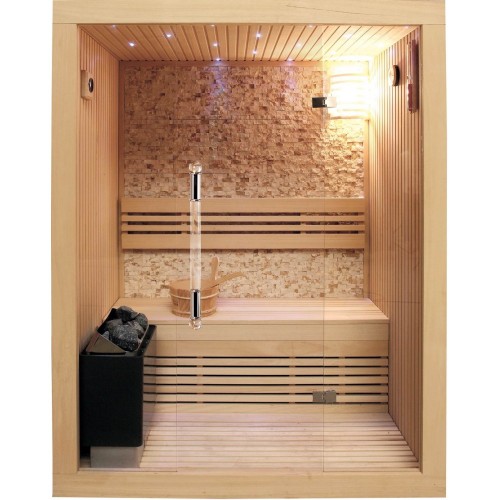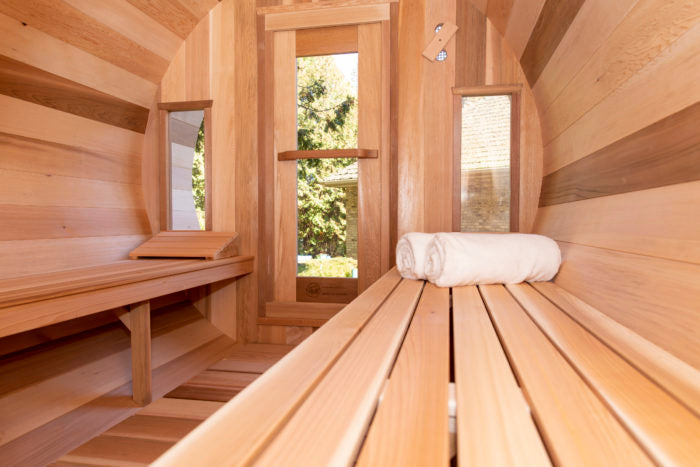Traditional Sauna - An Overview
Wiki Article
The Main Principles Of Traditional Sauna
Table of ContentsThe 20-Second Trick For Traditional SaunaThe Of Traditional SaunaGetting The Traditional Sauna To WorkUnknown Facts About Traditional SaunaTraditional Sauna Things To Know Before You Buy
A lot of the weight lost in a sauna is water loss and is re-gained upon rehydrating. Without an uncertainty sauna can be an essential part of a healthy and balanced weight loss program. To take a look at the distinctions in between traditional and IR saunas, I will divide these right into proven, theoretical, and made distinctions.Therefore, the best point in the saunawhich is at the ceiling straight over the sauna heateris usually in between 185 and 190 F. Claims that a standard sauna exceeds 200 F is simply not real and not relevant for electrical saunas marketed in the United States. The temperature for a far-infrared sauna is generally set between 120 and 140 F; however, unlike the standard sauna, the goal in and IR area is not to achieve a heat.
Because of this, the temperature difference is nearly irrelevant, given that extreme sweating leads to both sauna kinds, however the method of warming the body is different. In an IR sauna the bather will certainly feel warm and will sweat a lot, but at a lot lower temperatures (Traditional Sauna). Thus, if the goal is to spend longer amount of times in the sauna, the IR sauna is a great choice
When a traditional sauna has actually been properly heated, the sauna walls are cozy, the air temperature level has actually attained set temperature level and the rocks are extremely heated. As a fascinating side note, the heated wall surfaces and the rocks are emitting far-infrared warm, combined with the heated air, to develop an "enveloping warm".
The Basic Principles Of Traditional Sauna

When the heat is achieved, the components cycle on and off to keep the heat. Many conventional sauna users appreciate putting water over the rocks to create vapor to increase sauna moisture degrees. The advantages of pouring water over the rocks consist of: making the room extra comfy, moistening the nasal passages, and enabling the usage of aromatherapy by mixing important oils with the water.

When the power gets in the body, it creates the body temperature to increase and eventually results in sweat. In an infrared sauna it is essential for the emitters/heaters to remain on virtually constantly. Considering that there is no mass of rocks to maintain warm, the sauna will certainly cool if the emitters closed off.
As stated over, the sauna bather in an infrared area wishes to position himself before operating emitters to obtain optimal gain from the warmth. The home heating time for the 2 spaces can be extremely different, depending upon why not check here just how the areas are used. For a traditional sauna, a bather should allow 30-40 mins for the area to accomplish a preferred temperature level and to properly pre-heat the rocks.
What Does Traditional Sauna Mean?
A well created sauna will commonly achieve a temperature level of 150-160 F in about 30-40 mins. For hotter temperature levels, the area might require to warm for a longer duration. Once the room achieves established temperature level, the heater will certainly cycle on and off, commonly running about 50% of the time. The insulated link wall surfaces and the warmed rocks will certainly keep the room warm and at stable temperature levels.

Conventional saunas tend to be larger (therefore utilize even more electrical power) than infrared saunas, although conventional saunas are certainly available in one and 2 individual dimensions. For a two-person typical sauna, 5x6 or 5x7 size is most popular. The leading bench can pleasantly seat two or 3 individuals and is additionally long sufficient to lie down during the sauna session.
The Best Strategy To Use For Traditional Sauna
site link The ordinary expense per kWH of electrical power in the U.S. is about $0.11, so a 4.5 kW heating unit will set you back about $.50 to compete one hour, if the heater runs continually for one hour. Generally a sauna heating system will certainly compete 75% of the very first hour and 50% of subsequent hours on given that the aspects cycle once the established temperature level is achieved.
There is a rarely reviewed difference in the social experience between the 2 areas. While our culture has actually shed some of the social advantage of the traditional sauna experience, it can be very socially rewarding (Traditional Sauna). From family time in the sauna, to heart-felt discussions with better halves, to sauna partiesthe typical sauna experience can cause intimate mingling
The Greatest Guide To Traditional Sauna
Most greater end infrared spaces consist of tinted light therapy, audio systems and full-glass fronts.Report this wiki page